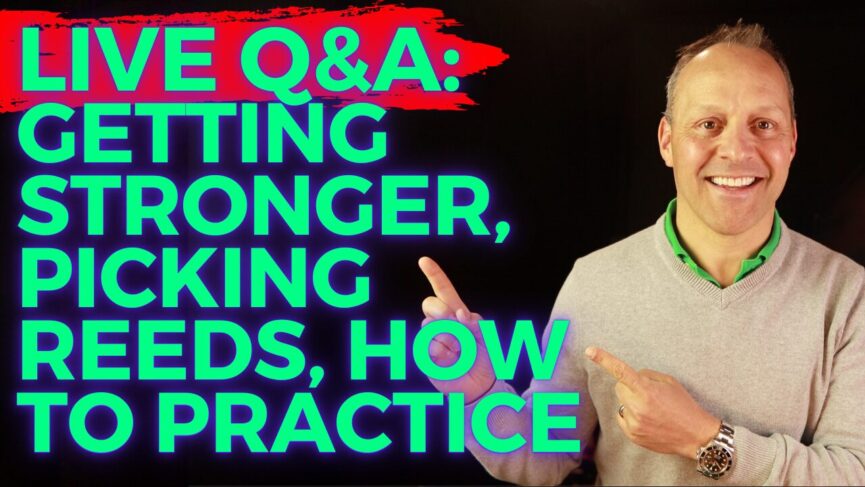
AS FEATURED IN

Bagpipe Essentials Masterclass Lesson #2: Master Bottom Hand Position for Faster & Better Fingering
by Jori Chisholm, Founder of BagpipeLessons.com
Last Updated: April 11, 2025
This video lesson will guide you through finding the ideal position for your bottom hand on your practice chanter, including the very important positioning of your pinky, thumb, and left ring fingers. These finger positions are crucial, whether you’re beginning your musical journey or looking to improve your technique. Each person’s hands are unique shape and size, so it’s essential to discover the optimal way to place your hands on your chanter to play with precision, expressiveness, and confidence.
This tutorial is a segment of the “Bagpipe Essentials Masterclass” online course, which features 31 detailed videos on essential bagpipe fingering techniques. In the Masterclass, I dive deep into everything from basic scales to advanced embellishments, designed to enhance your playing technique and help you tackle your favorite pipe tunes with greater precision. Whether you’re just beginning your bagpipe journey or you’re a seasoned player looking to polish your skills, this course is an invaluable resource.
The Masterclass is just one of the many benefits included in my Inner Circle membership. As a member, you’ll gain access to all my online courses, an extensive lesson library filled with hundreds of tunes and videos on nearly every piping topic, and weekly live online classes where I provide personalized guidance to help you achieve your piping goals. Joining the Inner Circle is like having a private tutor at your fingertips, ready to help you elevate your piping skills to the next level.
Watch the video and scroll down to read a summary or the full video script.
Video Transcript: Hey, Jori Chisholm from BagpipeLessons.com. In today’s video, I’ll guide you through finding the perfect position for your bottom hand on your practice chanter, including the very important position of your thumb. Now, this is crucial whether you’re just starting out with piping or looking to improve your technique and take it to the next level. Everybody’s hands have a unique shape and size, so it’s really important to find the optimal position for your hands on your chanter, so you can play your fingering with precision, expressiveness, and confidence.
This lesson is part of my Bagpipe Essentials Masterclass online course, which has 31 detailed videos on everything about bagpipe fingering technique. You can sign up for the course and get instant access at BagpipeLessons.com/masterclass. The course is also part of my Inner Circle membership, which gives you the best of everything at BagpipeLessons.com, including my massive lesson library with lessons, tunes, and videos, and you get weekly live classes with me that cover all aspects of piping. Learn more about my Inner Circle at BagpipeLessons.com/membership.
Now, to find the perfect position for your bottom hand, we’re going to start with the pinky on the hole, and then the index finger goes on the second pad. So if you look at your hand, you’ve got the first pad and then the little crease and then the second pad. That’s where we’re going to put the hole – right in the middle of that second pad. So starting again, pinky first, index finger on the second pad, and then just let the other two fingers drop. There we go. So we’ll try that again. Pinky first on the first pad, index finger on the second pad, and then drop the other two fingers down. That’s your perfect position.
And you may find that your fingers are very horizontal, or you may find that there’s a little bit of a downward angle, that is totally okay. We don’t want to curl our fingers around like this. We also do not want to make our fingers really tight. If you find that you get these little creases here on your knuckles from hyper-extending your fingers, and making them hyper-straight, you don’t want to do that. As soon as you lock out your fingers, first of all, it requires a lot of extra tension to lock them out. But then also, it requires a lot more muscle exertion and strain to lift your fingers. So if your fingers are locked out, that is a sign that you are way tighter and pushing harder than you need to.
So try that again. Pinky first on the first pad, index finger on the second pad, and drop the other two down. Now let’s talk about your thumb on the back. This is really important and overlooked by a lot of pipers. The perfect position for your thumb is going to be right in between the middle finger and the ring finger. Many pipers that I’ve seen are way too high.
The reason you want to have your thumb right down there between the middle and the ring fingers is that it’s perfectly balanced right in the middle there. Anytime you’re moving your bottom hand to cover all the holes for those low G-based movements, birls, D throws, grips, taorluaths, or any bottom hand notes, you’re using your thumb to help. You’re not just pushing your fingers on the chanter, you’re actually using your thumb on the back for a little bit of a very light sort of pinching motion. And having that thumb down low is the perfect spot. So not up here. Some players put it right across from the middle finger, that’s still a little bit high. You want it just between the middle and the ring finger. That’s the perfect spot for you.
Thanks for watching the video all about the bottom hand position. If you’re looking to expand your understanding of bagpipe technique and elevate your confidence and precision, sign up for my Bagpipe Essentials Masterclass and you’ll get instant access to all 31 videos that cover everything from scales, gracenotes, doublings, and all of our most important embellishments. You can sign up at BagpipeLessons.com/masterclass.
If you’re looking for more support and resources, join my Inner Circle. You can enjoy the Masterclass, get exclusive access to my lesson library, and join me for my weekly live online classes. Sign up at BagpipeLessons.com/membership. Remember to subscribe to my YouTube channel to get notified when I post new videos. And visit my Learn page for more free resources and guides. And download my free guide, Learn the Pipes Right: Everything you Need to Get Started.
Thanks for watching and happy piping!




